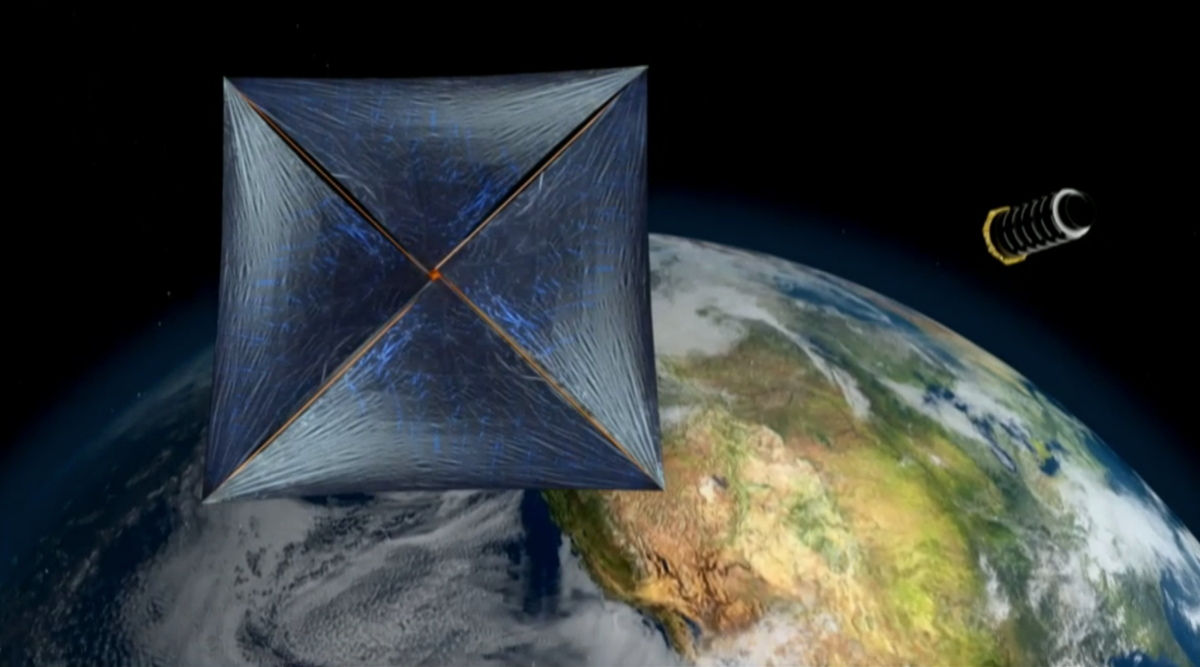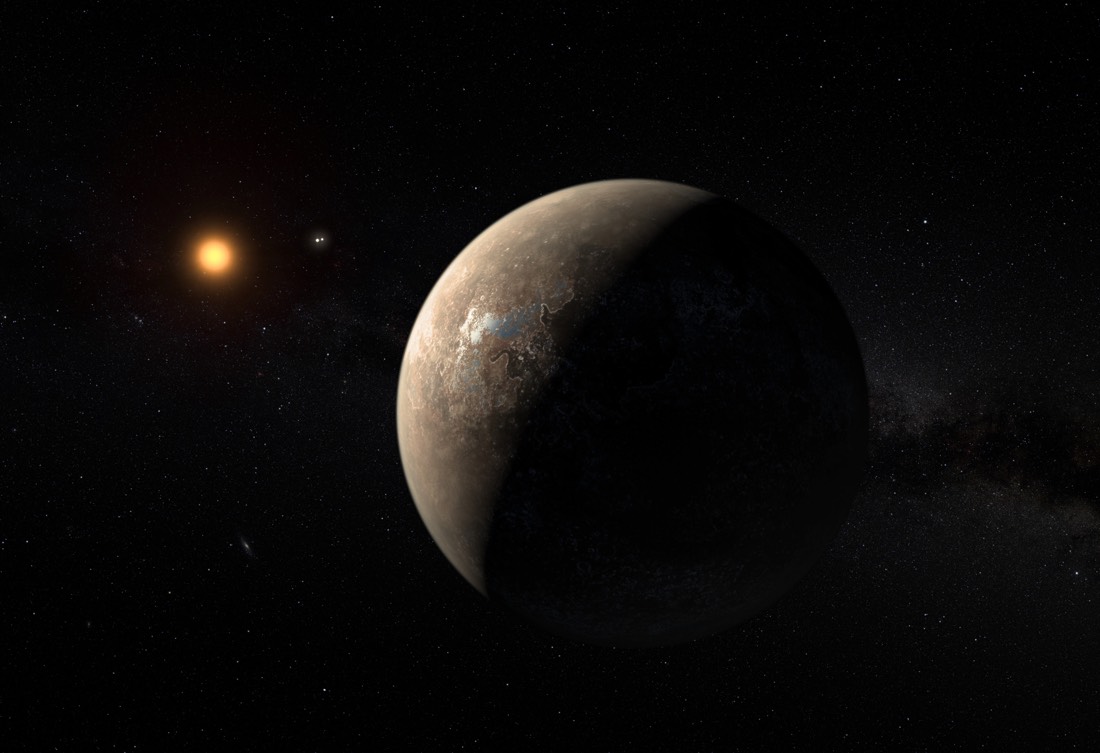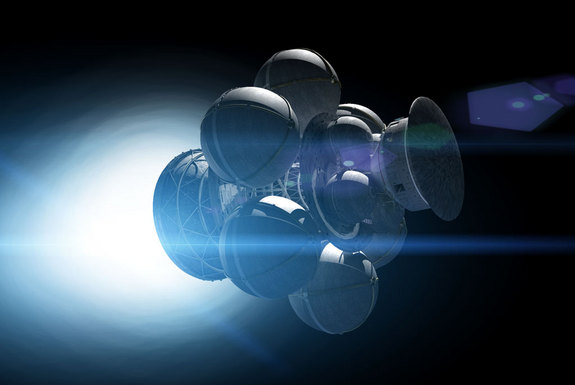Proxima b: Lasers Might One Day Power Ship to Closest Alien Planet

The discovery of a potentially Earth-like planet around Proxima Centauri, the star closest to our sun, has ignited interest in whether the alien world could support life — and if so, how humans might one day launch a space probe to the newfound planet.
Though the planet, dubbed Proxima b, is the closest alien world that has been discovered so far, it is still located 4.2 light-years away, which is equivalent to about 25 trillion miles. As such, there's still some technological distance to make up if humanity wants to see the newly discovered alien world up close.
Getting to another star will require something a lot faster than chemical rockets. The so-called Breakthrough Starshot project, unveiled in April by billionaire investor Yuri Milner and renowned physicist Stephen Hawking, proposes using a laser to push a tiny, wafer-size spaceship to some fraction of the speed of light, and letting it sail off on a ballistic path to a nearby star — in this case, Alpha Centauri, which is located about 4.3 light-years away from Earth. [8 Most Intriguing Earth-Like Planets]
The tiny probe would reach about 20 percent of the speed of light, allowing it to get to Alpha Centauri (or strictly speaking, the small companion star Proxima Centauri) in about 21 years, according to Breakthrough Starshot officials. Compare this to the fastest spaceships humans have ever launched: Voyagers 1 and 2, which travel at about 38,600 miles per hour (62,000 km/h) and 36,000 miles per hour (58,000 km/h), respectively, and the New Horizons probe, which zooms through space at 36,400 miles per hour (58,600 km/h). If any of these spacecraft were headed toward the Alpha Centauri system from Earth, they would arrive at Proxima Centauri in about 78,000 years, give or take a century.
Breakthrough Starshot
In a paper titled "A Roadmap to Interstellar Flight," Philip Lubin, a professor of cosmology at the University of California, Santa Barbara, outlines the technological pathways that may be opened to build something like the Breakthrough Starshot probe. Much of the work, he said in the study, published in April in the Journal of the British Interplanetary Society, has to be in developing better laser technologies.

For example, the kind of laser the spaceship would use is called a phased array. Phased arrays are used in radar — it's why modern navy ships don't have big rotating antennas. Instead of generating the signal with a single big antenna, these arrays use many small antennas and adjust the phase of the signal so that the waves are all in sync. [Video: Proxima Centauri's Alien Planet Closer Than You Think — With Right Spacecraft]
"In radars it is quite common," Lubin told Live Science. "On ships, that's a well-understood and mature technology. The real trick is short wavelengths, about 1 micron. It's a different technological base." (One micron is one-millionth of a meter, and is in the near-infrared part of the spectrum.
Sign up for the Live Science daily newsletter now
Get the world’s most fascinating discoveries delivered straight to your inbox.
Phased-array lasers have been built in the lab, but nothing on the scale you'd need for a Breakthrough Starshot project, Lubin said. And scale is important; as a general rule, the size of the array has to get larger, the farther you want your beam to go and stay focused on a small area.
The other issue is laser power and efficiency. "We'd much rather work at 0.5 microns, but that technology doesn't exist," Lubin said. On the other hand, ytterbium lasers at about 1.06 microns are available, and might be developed further.
Lubin uses the 1-micron wavelength as a baseline because if the laser is ground-based, it will penetrate through the atmosphere more easily. Longer wavelengths would require more power to punch through the air, as would some shorter ones, which would also be blocked by passing clouds or other atmospheric effects, he said. It's possible to put the array in orbit, but that would add to the expense of the project, he added.
The other issue is how long you can run a powerful laser. The kind of lasers being developed by the military to shoot down missiles, or even the ones that have been proposed to defend against asteroids, make very short pulses — on the order of tiny fractions of a second, Lubin said. The same is true of the ultra-powerful lasers used in fusion energy experiments. A starship-powering laser would likely need to run for at least a couple of minutes. This technology hasn't been developed yet.

Alternative methods
In addition to the Breakthrough Starshot initiative, other ideas have been proposed for interstellar travel. In the 1970s, the first proposals for a fusion-powered spacecraft, called Project Daedalus, were floated by the British Interplanetary Society. Daedalus would have involved a spacecraft with two stages, both driven by fusion rockets, that could reach about 12 percent of the speed of light to travel to a nearby star. Later, the Icarus Project, from the Icarus Foundation (funded by the British Interplanetary Society and the Tau Zero Foundation) proposed a "Son of Daedalus" project, a study to improve parts of the older Deadalus design. In the 1980s, a team from the U.S. Naval Academy wrote the Project Longshot study, which posited a spaceship that would reach Alpha Centauri in 100 years. [Warped Physics: 10 Effects of Faster-Than-Light Travel]
But Lubin said fusion power is probably not the best option. "You get only 1 percent conversion between the mass of the active fuel and the exhaust," he said. In other words, the energy in the fuel doesn't get converted to a lot of velocity. On top of that the spacecraft would still have to carry fuel, adding to its overall mass. Another big challenge: nobody has figured out how to build a fusion reactor yet, which makes Project Daedalus impractical for the time being. "Daedalus is a nonstarter," Lubin said.
Ion engines, like those used on NASA's Dawn spacecraft, which launched in 2007 to study two of the largest objects in the main asteroid belt between Mars and Jupiter, can provide high exhaust velocities and accelerate spacecraft for a long time. But, ion engines still aren't powerful enough to take space probes to Alpha Centauri in less than millennia, Lubin said. And again, the spacecraft would have to carry too much fuel.
Another idea for powerful rockets was the foundation for the Orion project, which proposed using nuclear bombs to propel spaceships into orbit. "That was really for getting to orbit and around the solar system," Lubin said. "It wouldn't be fast enough [to travel to Proxima Centauri]."
Nuclear-powered rocket designs provide a lot of thrust, but they are massive, and they still don't get around the problem of having to take a lot of fuel with you, he added.
Sci-fi vs. fact

The only option that creates enough energy is antimatter, Lubin said, but this introduces two other problems: One is simply controlling the reaction and exhaust, because matter and antimatter create energy by annihilating one another and generating energy as photons and charged particles. Only the charged particles can be directed to produce thrust, but they aren't a big portion of the annihilation products.
The other problem is that producing antimatter and then storing it is difficult. To make even a few atoms of antimatter requires sophisticated facilities like those at CERN, which operates the world's largest particle accelerators, among them the Large Hadron Collider near Geneva, Switzerland. At CERN, researchers managed to trap a few hundred atoms of anti-hydrogen for 16 minutes, according to a paper published in June 2011 in the journal Nature Physics.
Antimatter occurs naturally in the Earth's upper atmosphere in small amounts, near gas giants such as Jupiter, and it's used in PET scans, but ways to retrieve it have not yet been developed.
This leaves directed energy — that is, lasers — as the best bet, Lubin said. This method doesn't require taking fuel along, as it effectively gets left on Earth or in Earth orbit. The laser-based technology is almost sophisticated enough to make interstellar travel a reality, though it will still take decades to develop, Lubin said.
And the big downside? You can't stop the ship, since the laser engine powering it is back on Earth. This means that engineers might have to develop some hybrid system — possibly involving a laser onboard the probe — that could slow it down, but that would increase the mass of the spacecraft. "I have been talking about this for years," Lubin said. "I really wish someone could solve this problem."
Original article on Live Science.












